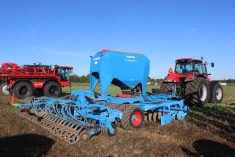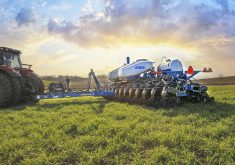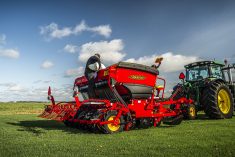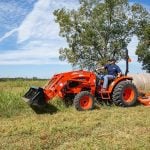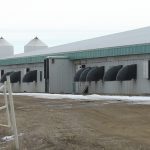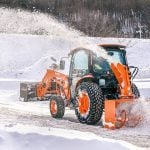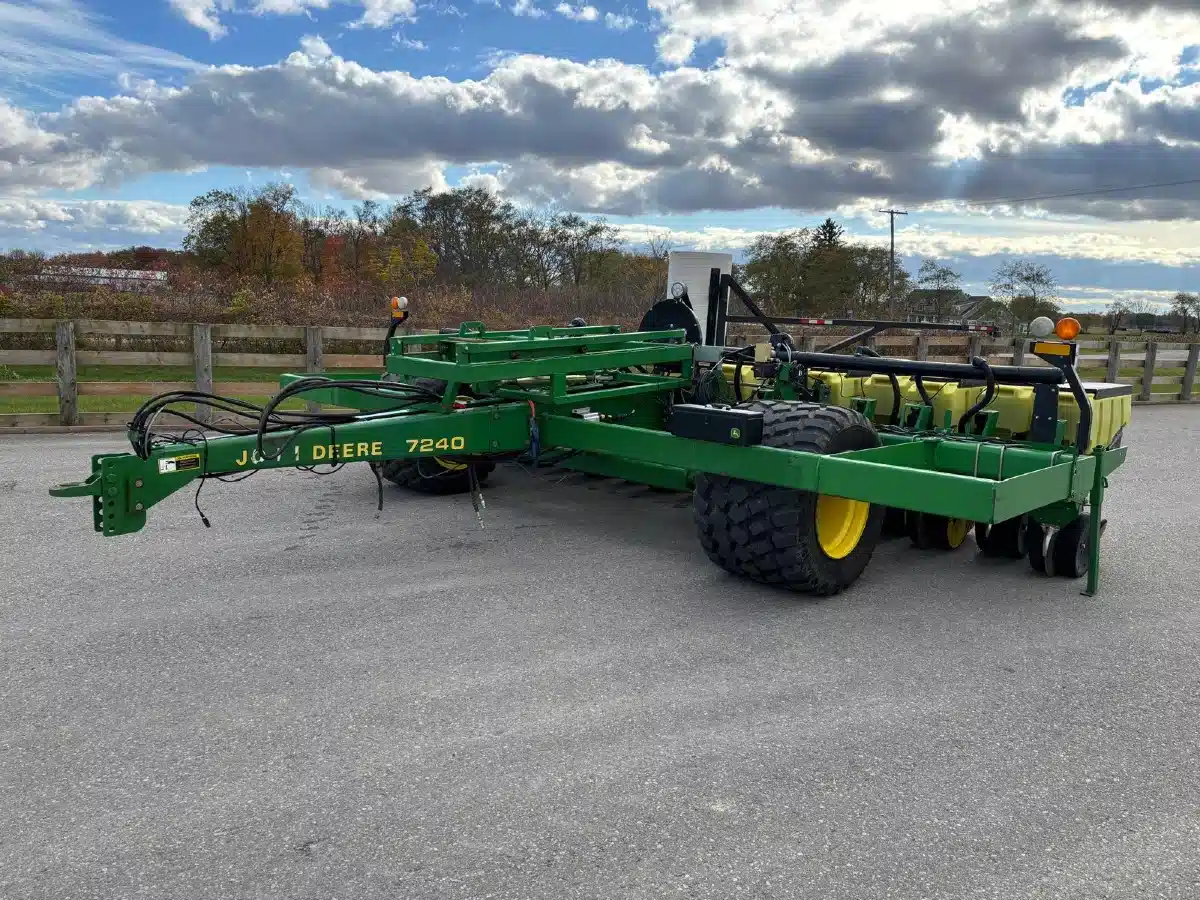Advances in technology and plant breeding make it possible to manage with just one planter, but it can be a challenge to maximize yields when doing so.
Differences in soil types, region and row spacing from crop to crop are primary considerations. Most growers find the 7.5-inch row spacing in wheat to be the main impediment to the one-planter option.
Horst Bohner, soybean specialist with the Ontario Ministry of Agriculture, Food and Rural Affairs, has worked with different planters and seeders in research trials and is familiar with their limitations.
Read Also
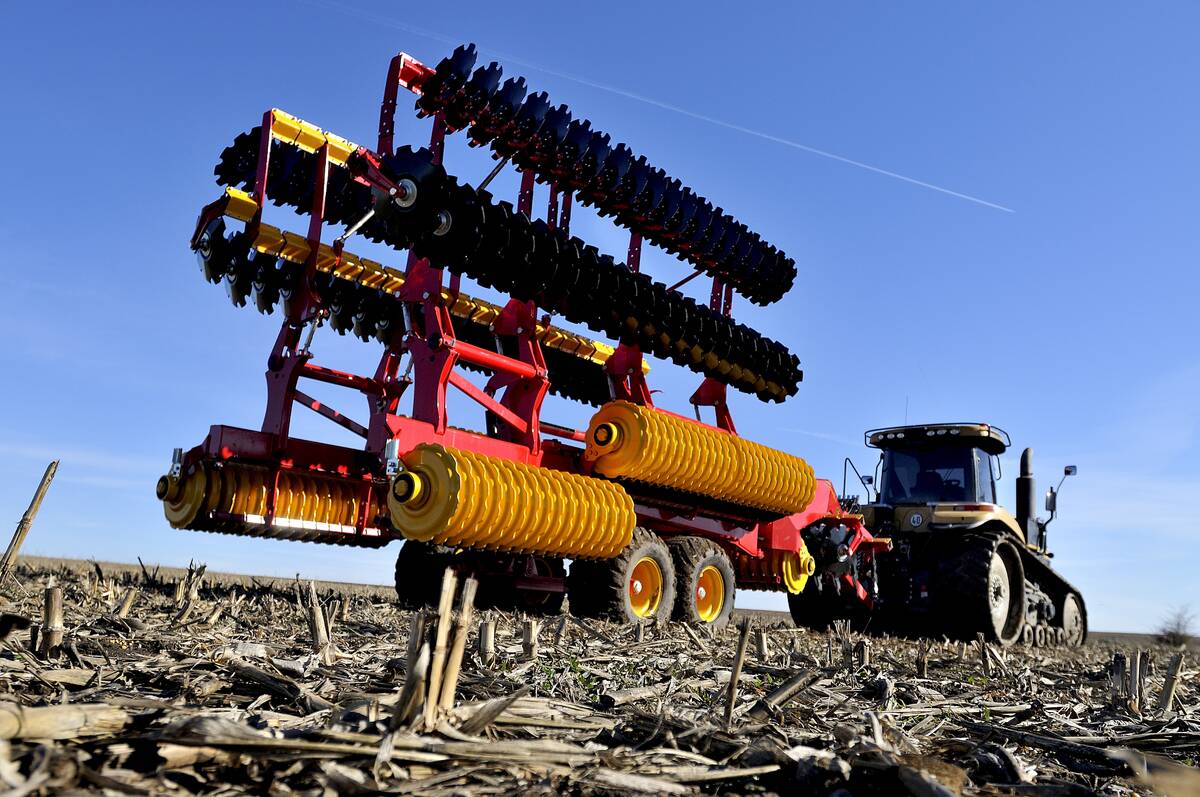
Evolution of European equipment manufacturers runs deep
A look at how Lemken and Väderstad have evolved from their traditional offerings of tillage equipment to include planting and seeding equipment in their lineups.
Most growers work with a drill for wheat, soybeans and winter canola and use a planter for corn, soybeans or canola. Planters are wider, can reduce seeding rates and are more accurate on depth.
The issue of planter versus drill comes down to singulation, says Bohner. At 7.5-inch spacing or narrower, only a seed drill has enough physical space between rows, with no room for a seed singulation mechanism.
“This is why most planters can only be reduced to 15-inch spacing,” he says.
“Companies have tried to make seed drills more accurate, which has worked to a point, but (they) don’t have the seed depth accuracy needed for corn.”
In spite of challenges, Stephen Denys has been using the same planter for corn and soybeans for 25 years, used it for wheat during the last five years and for sugar beets since he started growing those two years ago. He also grows edible beans.
His planter is set for 30-inch rows for corn and sugar beets and 15 inches for soybeans, edible beans and wheat, and he doubles-back on his wheat to get 7.5-inch spacing.
He also has a Precision electric drive and hydraulic down-pressure, with separate seed plates for each crop.
“The biggest challenge to me is that it’s slower to plant wheat,” says Denys, who farms outside Chatham and is director of market and product development for Maizex Seeds.
“In the spring, I need a couple of hours to switch between crops, so this does influence some decision-making on nice days when you’d like to be in two places at once. But this is manageable.”
Denys treats the one-planter option as an opportunity. There’s just one to service, one tractor to set-up (with RTK) and one planter with which he can spread his investment on things like down-pressure, Bandits for banding nitrogen, or using electric drives. And there’s less to store.
“If I had twice the acres, I would likely look at investing in a second planter, to focus on soybeans and wheat and cover more acres faster in the spring,” he says. “This is why I invested in a bigger planter a few years ago.”
He started using a Precision metering system for his wheat about five years ago when he invested in electric row unit drives. He one of the first in Canada to use wheat plates on that system.
The hydraulic down-pressure helps with uniform depth, which is critical when managing between sandy loam and clay soils. He also gets better singulation for corn and sugar beets, which is important for stand uniformity.
In soybeans, the electric drives enable Denys to variable-rate seed within the same field, with a range of 155,000 to 200,000 seeds per acre on sand knolls.
In corn, he can run with 30,000 seeds per acre on the knolls and up to 36,000 on clay or loam.
“In wheat, I believe I gain three to five bushels per acre compared to a drill and an advantage, although not as great compared to an air seeder,” he says.
“The biggest difference is I have constant depth with the hydraulic down-pressure, which is important in wheat also. The only negative is that with a 1.5- to 1.7-million population on wheat, the sensors I have can’t keep up, so I use weight to determine if I’m on track.”
The canola wild card
The entry of winter canola in southwestern Ontario created additional challenges, mainly because of seed size.
At one point, Alex Knight used three planters – a 30-inch for corn, a 15-inch for soybeans and a grain drill.
“We’ve since rid ourselves of the 15-inch soybean planter and gone with an air drill that we can block one set of rows and plant 15s with it,” says Knight, who farms with his father, Bill, northeast of Blenheim.
“We’re planting the wheat, canola and soybeans with the air drill and using the 30-inch planter for corn.”
Using only one planter isn’t impossible, he says. A lot depends on a grower’s land. Knight believes he could get by with one planter, but his wheat yields would suffer with 15-inch rows.
“We have growers down here who are planting everything with one planter, including their wheat. They’re using 15-inch rows for soybeans and wheat, with a Kinze planter, so they can split and grow 30-inch corn.
“They’re also on much lighter soil and being closer to the lake, the air tends to be a little more humid.”






